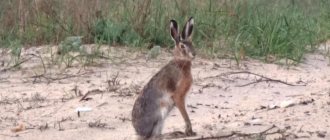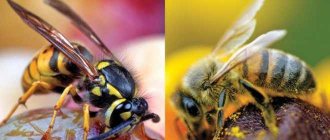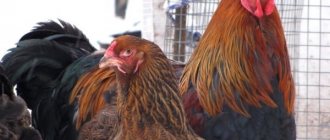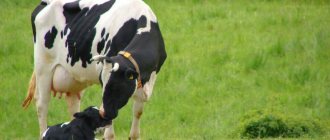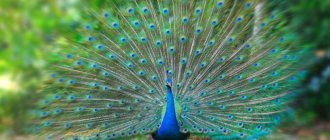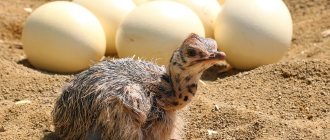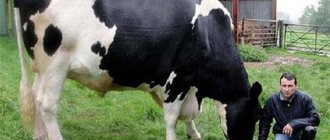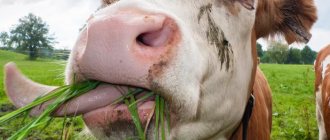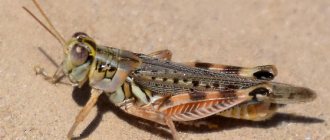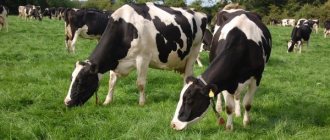Moreover, with this approach it would be possible to limit oneself to only three or four breeds, but the animal bred by breeders must also have some other characteristics due to which it will be popular among farmers. For example, the shaggy Angus breed with its thick undercoat was bred in the cool and windy regions of Scotland, therefore it is accustomed to difficult climatic conditions, and therefore is highly valued in Russia.
If we talk about breeds of domestic cows, we cannot fail to mention the zebu - although they are not bred in Russia, they are the most common breed worldwide. It is generally accepted that this is an African breed, since zebu are found everywhere here, and their population numbers in the hundreds millions of heads, but this is not entirely true: the animal comes from the Indian aurochs and in its modern form is a cross between it and European domestic cows. A characteristic feature of such cattle are large horns, and its popularity is so great that in three African countries at once - Botswana, Madagascar and Niger, this breed of cow was awarded the national emblem.
Kinds
Dairy: these include red steppe, black-and-white, Kholmogory, Yaroslavl and others. The number of livestock of such species in domestic agricultural enterprises is more than 80 percent of the total number of cattle.
Meat: in our country, the most common meat species for breeding are Kazakh, Kalmyk and white-headed. They form the basis of the meat stock, and the rest are of foreign origin.
Mixed productivity cattle are used to produce both milk and high-quality beef.
Rare breeds.
Historical reference
The first records in which these mammals were mentioned as a type of livestock date back to the 8th century. BC.
The ancestor of wild cows is considered to be the aurochs, a steppe bull that disappeared in the 17th century and lived in most of Eurasia and Africa.
Dairy cows
Aishirskaya
Cows are reddish brown, mahogany in color, ranging from light to dark in shade on a white background. Some bulls are so dark in color that they appear almost black. The spots are usually jagged at the edges, small and scattered throughout the body.
These are medium-sized cows, at maturity they weigh more than 550 kg, are strong, hardy, stand calmly in stalls on dairy farms, and adapt to milking machines due to the shape of the udder, and are not susceptible to leg problems.
Few other breeds match the Ayshire cow's ability to thrive in unfavorable feeding conditions or climate. Cows do not have yellow fat, which reduces the value of the carcass, so Ayrshires are raised as steers. The breed's milk has a moderate fat content.
Jersey
The cows are usually light brown, although they can be almost gray and dull black. They may also have white spots that cover most of the carcass. A true Jersey cow always has a black nose and an almost white muzzle around the mouth. Strong legs are less prone to injury.
Cows are relatively small in size, around 400-450 kg.
The Jersey breed produces milk more efficiently than other breeds. This is especially important in countries where feed is scarce and makes the breed a profitable option for agriculture.
Holstein
The breed is recognizable due to its black and white or red and white pattern, milk production, and large body. A healthy Holstein calf weighs 40 kg or more at birth. A mature Holstein cow weighs about 680 kg. The normal productive life of the Holstein breed is six years.
Cows produce more milk than other breeds. They have an unmatched genetic ability to improve without a biological ceiling. Genetic improvements of 1 to 2% per year are absolutely realistic.
Cows adapt to being kept on closed farms, partial and free grazing. Also, living conditions do not matter; animals feed in highlands and lowlands.
Description
Dimensions
Cows are large, massive animals, their average weight is about 750 kg, can range from 147 to 1363 kg, height is in the range of 120-150 cm.
Appearance
— Advertising —
The cow's muzzle is large and wide, with a wide, flat forehead, and the top is covered with thick, curly fur. The neck is short and massive. There are two hollow horns on the head; there are also hornless individuals. The horns grow upward or to the sides, lyre-shaped. The ears are low, in some species with “earrings”. The eyes are large and protruding. The tail is long, thick, ends in a tassel, and is located high. The back is slightly arched. The hips are large and flat. In the groin area there is an udder, that is, a mammary gland divided by a septum into two halves.
Body
The cow's body is covered with short hair, colored white, black, red or brown and their shades. Coloring can be plain, piebald or striped.
Beef cows
Highland
The large head with long fringe (which appears to cover the eyes), long and dark horns make the breed memorable and unusual.
The cow has a double layer of wool - a downy undercoat and long outer fur, it reaches a length of 30 cm and is covered with oils that repel moisture. In hot, dry climates, Highland cows shed thick fur, then grow new fur when wet, cold weather returns.
The coat color is black, spotted, red, yellow and grayish brown. The breed is hardy with a natural and unique ability to graze effectively on pastures that are poor in vegetation. It is distinguished by its longevity, many cows reproduce at the age of more than 18 years, giving birth to 15 calves in their lifetime. Maternal instinct is developed; even first-generation heifers rarely abandon their offspring.
Adult bulls weigh about 800 kg, cows - 500 kg.
They produce lean beef, with marbled, tender and juicy flesh with a characteristic taste. Cow meat is healthy, nutritious, lower in fat and cholesterol, and higher in protein and iron than other cow breeds.
Aberdeen Angus
The breed is born without horns. Cows are black or red, although the dominant shade is black, sometimes white appears on the udder.
The breed is resistant to harsh weather, undemanding, easily adaptable, and good-natured. Specimens ripen early, after slaughter they produce meat carcasses with pleasant-tasting marbled beef. The Angus breed is used in crossbreeding to improve the quality of animals. Females have a good ability to give birth and raise calves. They are also used as a gene pool, since the dominant gene conveys quality characteristics.
Hereford
The cow breed is colored from dark red to red-yellow. White ones look contrasting against this background:
- head;
- withers;
- dewlap;
- stomach.
Also common are cows with white sides and white markings below the knees and hocks. Most animals have short, thick horns that usually curve on the sides of the head, but the Hereford hornless cow was bred in North America and Great Britain.
Mature males weigh up to 800 kg, females about 550 kg.
This breed is energetic and renowned for its longevity, with females producing calves over 15 years of age. Bulls produce offspring in a herd up to 12 years or more. Many breeders keep animals until they die of natural causes.
The Hereford breed lives in the arctic snows of Finland, endures the heat of the Northern Transvaal, and withstands the harsh climate and coarse grasses of northern Uruguay or the subtropical zones of Brazil.
Nutritional Features
Cows, like other cattle, are herbivores
. Due to their anatomical structure, they are capable of digesting rough, succulent and grain feed. Roughage is characterized by a high fiber content and a low percentage of moisture (hay, branch feed, straw). Juicy feed, on the contrary, is rich in moisture (silage, grass, beets). Cereal or concentrated feeds have high nutritional value (meal, cake, granulated feed, grain: wheat, triticale, barley, oats, millet, sorghum, maize).
— Advertising —
Types of feeding
- voluminous (a little concentrate),
- low-concentration,
- concentrated.
Optimal type of feeding
The most optimal is the first one with about 70% roughage and succulent feed. In order for livestock to be productive, animal supplements are included in their diet: bone meal, meat and bone meal, minerals, table salt, vitamins.
Combined meat and dairy cows
Belgian blue cow
A large animal with rounded outlines and pronounced muscles. The shoulder, back, lower back and sacrum are muscular. The back is straight, the sacrum is inclined, the tail is pronounced. It has beautiful, strong legs and walks easily.
The color is white with blue and black or combinations thereof, red is present in some genotypes. The breed is known for its calm temperament.
The weight of an adult bull is from 1100 to 1250 kg. Cows from 850 to 900 kg.
Belgian Blue in crossbreeding programs with other dairy or meat breeds increases the productivity of the specimen by 5 - 7% compared to the maternal line.
Simmental
The color ranges from gold to red with white, and is either evenly distributed or distinctly spotted on a white background. The head is white and often a white stripe appears on the shoulders.
Cows of the breed weigh about 700-900 kg, and bulls - 1300 kg.
Selective breeding to produce milk and beef at minimal cost has created a balanced breed that is adaptable, strong-muscled, and has good survivability. Submissiveness and good mothering qualities are other characteristics of the breed.
When crossed, the Simmental breed provides good growth and therefore better beef yield for the crossed offspring, improves the quality of meat with white fat and excellent marbling, and improves milk yield.
Shvitskaya
The light brown body, creamy white muzzle and dark blue pigmented eyes help the breed withstand extreme solar radiation. They are strong, fertile, long-lived, easily adaptable and balanced in the structure of the cow's hooves and limbs.
The breed provides a good yield of milk and meat.
Swiss cow milk is loved by cheesemakers because it has the best fat to protein ratio among dairy breeds.
General information
Modern cows are female wild bulls. In general, cattle are divided into 2 large genera - buffaloes and bovines. It is noteworthy that when crossing them it will not be possible to obtain offspring. Bull-shaped animals are divided into 4 varieties:
- tur - all cattle descended from him;
- gayal, gaur, banteng - cattle living in southern Asia;
- yak – native to central Asia;
- buffalo.
According to historical information, aurochs lived in Central Asia until the beginning of the seventeenth century, while in Africa they disappeared much earlier.
Today cows are divided into the following types:
- Dairy - they are grown to produce milk. Due to their thin build, the animals are not profitable to breed for beef. That is why such individuals are not eaten. The advantage of animals of this direction is considered to be a calm and balanced character.
- Meat ones are distinguished by their large dimensions. Due to the rapid growth of muscle mass, animals produce a lot of high-quality meat.
- Combined - considered universal. They are able to combine the qualities of 2 directions.
Behavior
Cow
is a herd animal. Each herd has its own dominant hierarchy, which is formed during clashes between individuals. Once established, it remains unchanged in a given herd. In general, the herd lives amicably and obeys its leader. Domestic cows use special odors and pheromones to communicate with each other. With the help of a developed sense of smell, they distinguish between the emotions of their relatives, especially fear and excitement. Head position is another means of communication. It expresses the animal’s mood (submissive, anxious). The mooing or roaring of cows serves to express suffering (with late milking), hunger, thirst, or the call of a calf or relative.
Cows spend about a third of the day grazing, another third chewing cud, and the rest of the time they rest.
Common Breeds
Subspecies
- Cow (Bos taurus taurus)
- Zebu (Bos taurus indicus) is distinguished by the presence of a hump on its back.
- The aurochs (Bos taurus primigenius) is an extinct wild ancestor of the domestic cow.
Today there are about 1080 known breeds of cow, 121 breeds of zebu and 29 hybrid breeds. Dairy, meat and mixed meat and dairy breeds were bred depending on the needs and food supply of a particular breeding region.
Content
On the one hand, cows have become so popular all over the world, including because they are quite unpretentious in care, however, any experienced farmer will confirm that it is fundamentally important to properly care for the animal - this is the only way to ensure significant yields of tasty milk, and only this way the animal will gain many kilograms of marbled meat. Proper rearing assumes that all necessary conditions for comfort will be created for the animal.
For beginning breeders, such conditions may not be an obvious requirement, so let’s look at this topic in more detail.
First of all, you can keep a cow either in a pasture or in a stall. In the conditions of the post-Soviet space, none of these methods is the most profitable on its own - it is best to combine them. The fact is that on pasture this artiodactyl eats for free and at the same time receives much more useful substances that will have a positive effect on the products obtained from it. At the same time, our climate does not allow such an animal to be driven outside in winter, and there is no pasture there anymore, so for wintering it is necessary to equip a special room where the cow can be hidden from bad weather and in the warm season.
Even on a pasture, feeding cattle can be organized in different ways. Free grazing assumes that animals move freely throughout the entire meadow and choose for themselves what to eat. The penned grazing option allows for more efficient use of the pasture, since its entire area is divided into several separate paddocks, and the ruminants are kept inside one paddock until They will eat absolutely all the greens there. The second method is slightly better, as it allows the grass to grow gradually as the need arises, but if you cannot divide the area into at least 8 paddocks, this method loses its practicality.
A requirement for a barn that most new barns are unaware of is constant lighting - it may not be bright, but it should never go out completely.
Unlike many other domestic animals, a cow must be tied even in a barn. The air inside the barn must be warm and dry enough, otherwise the ruminants can easily get sick.
Uneaten remains of plant food can quickly deteriorate and provoke poisoning of livestock, not to mention the fact that any foreign infection may become interested in them. To prevent this from happening, it is recommended to diligently clean the stall daily of yesterday's feed. At the same time, do not forget to intensively water the cow, which needs moisture at least 3 times a day - ideally, it is better to install an automatic drinker for her, which will provide constant access to water.
Experienced livestock breeders will also advise beginners to acquire equipment such as a hoof trimmer. The fact is that the keratinized tissue, which forms the hoof, grows at a rate of 6-8 millimeters per month, compensating for abrasion on the ground, but a domestic cow, spending a significant part of its life in a stall, moves little, so the leg can become deformed. The opposite situation is observed if the floor is made of crumbling concrete - then the hooves wear out faster and can be injured, and if the floor is not yet permeable to moisture, there is a huge risk of infection. The only way to prevent danger is to regularly trim the hooves, but since such a procedure can cause some discomfort to the animal, the ruminant may resist. The machine allows you not only to secure the animal’s leg, but also to carefully trim excess keratinized tissue.
From the history of domestication
This is one of the oldest domesticated artiodactyls: they were domesticated about 9 thousand years ago - the first were goats, pigs, and sheep. First of all, people needed milking cows, since meat was provided by hunting other animals, and a person could not drink milk from all animals.
The most ancient traces indicating the practice of cattle breeding were found in the countries of the Middle East - in Syria, Libya, Israel, Iraq. The ancestor of the domestic cow is a wild bull (scientifically it is called aurochs).
Reproduction
Cows live about 20 years, sometimes up to 35 years. They grow up to the age of 5 years, maximum up to 6-7 years. Young heifers reach sexual maturity at 1-2 years, while bull calves at 6-8 months. It is interesting that puberty as such is not evidence that the animal’s body is ready for reproduction; in cows, this process is more associated not with age, but with weight. It is believed that individuals that have reached a weight of 50-60% of the mass of an adult individual of the same breed are ready for reproduction. This is why bulls and heifers are kept separately until full maturity. Heifers are born on average from the age of 18-22 months, bull calves a little earlier (14-18 months). The cow does not have a specific mating season; reproduction is possible throughout the year.
Pregnant heifers are called pregnant
. Their pregnancy lasts about 285 days. 1.5-2 months before calving, the cow develops an udder. As a rule, one calf is born; twins occasionally occur (in 2% of cases). The weight of newborn calves ranges from 18-60 kg depending on the breed.
After calving, lactation begins. In the first week, the cow produces so-called “colostrum”. Milk feeding of young animals continues until the age of 9 months (for meat breeds 6-8 months), but from the age of three months calves also begin to eat grass. After calving, lactation continues for up to a year while feeding the offspring with milk or with regular milking. After 45-60 days, the cow is inseminated again, and 2 months before the new calving they stop milking.
Cows - life expectancy
With normal maintenance and not too intensive use, a cow can live up to 20–25 years. Some specimens lived up to 35 years.
The lifespan of bulls is 15–20 years. But in large modern farms, a cow is usually used for only 3–4 years.
Cow body temperature, respiratory rate, pulse
The body temperature of a cow is 37.5–39.5 C. In young animals it is 38.5–40 C. The respiratory rate of cows is 12–25. Young animals have 30–70 respiratory movements per minute. Pulse 50–80 beats per minute. Young animals have 120–160 beats per minute.
Should the tour be a clone?
In one of the caves in Derbyshire, in central England, the remains of a cow's ancestor were found, which are more than six thousand years old. Several leading institutions in the UK and Ireland carried out a thorough analysis of the genetic material and produced the first strand of tur DNA. Polish scientists intend to use these data to clone the animal; their desire is actively supported by the Polish Ministry of Environmental Protection.
Scientists do not advertise whether this procedure is needed by society and whether it will entail mass cloning of long-extinct animals and birds, and there are suspicions that these experiments have long been carried out under the heading “secret”, so as not to disturb the unstable minds of people.
Slaughter
Meat yield primarily depends on the average weight of animals. A cow weighs on average between 300-450 kg, bulls are slightly larger - up to 850 kg. The weight of livestock is divided into the following categories:
- Class A is a selected category, this includes individuals weighing from 500 kg. Such meat is sold in small wholesale in markets and stores.
- Class B - first grade. The weight of cows here should be 400-500 kg. Such an animal has a proportional physique; protruding shoulder blades and spinous processes of the vertebrae and ischial tuberosities are not visible. A castrated animal has a uniform layer of fat throughout its body.
- Class C - second grade, animal weight up to 450 kg. The animal is distinguished by satisfactory body development, slightly angular, with slightly protruding shoulder blades. The fat layer is found only in some places.
- Class D - third grade. Cows do not weigh more than 300 kg. Such animals are distinguished by underdeveloped muscles, all the bones of the skeleton are clearly visualized, and there is no fat layer at all. Individuals in this category are rejected and are rarely slaughtered.
Important! If a cow carcass does not fit into any of these groups, such meat is branded with a triangle.
To obtain young veal, calves are also sent to slaughter. To do this, at the age of 3 months they are tested according to external indicators, its purpose is to determine the approximate meat yield.
As already mentioned, the weight of the animal and slaughter weight depend on many factors, which include:
- Hereditary qualities. All of them are determined by the characteristics of a particular breed and its orientation.
- Animal health, age and gender, natural purpose.
- Quality of food and living conditions of the individual.
- The climate in the region where the cow lives.
Care
The barn must be clean, otherwise the cattle may get sick. To do this, the floor must be lined with straw, and when it becomes dirty, it must be completely replaced with a clean one.
Domestic farm animals need vaccinations from time to time against various diseases.
Note!
Chicken - description, types, classification, nutrition and maintenance of domestic chicken (115 photos and videos)Fretka - lifestyle, care and character traits. 115 photos and videos tips for keeping a pet ferret
- Sheep - lifestyle, description of breeds, habitat, feeding and care of sheep when growing (145 photos and videos)
The cow must be milked on time, otherwise she may develop mastitis and stop milking.
Feeding a cow
Drinking modes
The water content in a cow's body is 60%. An animal can live no more than 4–8 days without water, while without food it can last 30–40 days. The water temperature for watering adult cows should be no lower than 10–12 C, and for young animals 15–30 C, therefore, when watering animals on the street, it is necessary to install heated drinking bowls, or pour warm water into the troughs and ensure that its temperature was in a comfortable range.
The optimal regimen for watering cows when using automatic drinkers is considered to be 12–21 times of watering in small portions. Individual and group drinking bowls are commercially produced. Individual drinking bowls are suitable for tethered housing. Group drinking bowls are used for free-stall and stall-camp pasture housing. When using group drinking bowls, care should be taken to ensure that the drinking front per cow is at least 60 cm.
In the absence of automatic drinkers, cows are watered 3 times a day. Animals drink most readily immediately after milking or feeding.
Every minute a cow's body loses up to 0.6 grams in milk. protein, 0.66 g. fat and 0.8 g. lactose. Such intense loads require timely replenishment of losses with good quality balanced feed.
A high-milk cow should receive about 30 kg. feed per day. The use of group feeders requires providing cows with a feeding front 70–80 cm wide for each cow.
Cow diet
The diet of cows depends on their gender, age and economic group (stud bulls, dairy cows, young animals, fattening calves). In dairy cows, the diet depends on the physiological state of the animal. A distinction is made between feeding during the dry, pregnant and lactation periods.
Breeding bulls need increased feeding. In winter, they are given food 2–3 times a day; in summer, the number of feedings increases and reaches 3–4 times. They use exclusively fresh and high-quality feed, balanced in nutrients, vitamins and microelements.
The main task of feeding stud bulls is to constantly maintain them in factory condition and prevent emaciation or obesity, therefore, during periods of intensive use, feeding rates increase, and when activity decreases, they decrease.
Feeding young animals is particularly complex and varied, due to rapid development and associated frequent changes in diet. In the first 30–60 minutes after birth, the calf needs to drink its mother's colostrum. It is best to bottle feed the baby. Drinking colostrum from a bucket can lead to the formation of a dense clot of colostrum in the calf's abomasum and the development of dyspepsia. In the first days, calves are fed 5–6 times a day, gradually increasing the portion, reducing the frequency of feeding.
During the dairy period, calves are fed with special dietary feed additives (acidophilic yogurt, lysozyme, oat milk, artificial colostrum). During the first 10–20 days, calves are gradually accustomed to eating concentrated and roughage feed, that is, compound feed and hay. Calves are fed milk until they reach the age of 1.5 months, skim milk is given starting from one month of age, hay and concentrates from two months of age, and silage from four months of age.
In total, from birth to 6 months of age, a rapidly growing calf consumes about: 200–250 kg. milk, 400–450 kg. skim milk, 2.5 quintals of hay, 4 c. silage and 1.5 c. root vegetables and concentrates.
Young cows aged 12–14 months or adult animals are put on fattening 70–90 days before slaughter to bring them to condition.
It is necessary to distinguish between fattening and fattening. The first involves keeping animals indoors and actively feeding them for a short period (70 days for adult animals and 90 for young animals). Fattening is fattening done on grazing, most often using the pen method of grazing pastures. Fattening requires less feed than fattening, but takes longer (90 for adult animals and 120–150 days for young animals).
When cows are put on fattening, they are accustomed to new feeds for the first 5–10 days. Very often, agricultural waste is used for fattening: stillage, pulp, potato pulp. In addition, they also provide the usual food for cows: hay, haylage, silage, concentrated and green feed. When fattening on stillage and pulp, you need to carefully monitor the condition of the food, as it can quickly turn sour and cause poisoning.
Normally, an adult cow should receive 60–80 kg daily, and young animals 40–50 kg. bards. In addition to this, additional hay or other roughage is given at the rate of 1–1.5 kg. for every 100 kg. animal weight.
With good feeding and maintenance, fattening young animals should be given 900–1000 grams daily.
Fattening cows are not only actively fed, but also conditions are created for them that further accelerate fattening. Grazing areas are located in close proximity to each other and to watering areas in order to avoid long hauls. Give the animals plenty of water 2-3 times a day.
The diet of dairy cows depends on their condition. During lactation, the cow receives a complete diet consisting of hay, haylage, concentrates; in the summer, green food is added to the diet, and silage is added to the diet in the winter.
When transferring a cow to dry housing, succulent feed is completely excluded from the diet. The supply of concentrates is also significantly limited, giving preference to roughage (hay, straw).
In the period preceding calving, silage is completely excluded from the cows' diet, replacing it with high-quality hay. Feeding cows acidic feed (silage) can cause an increase in fetal acidosis, which leads to tissue hypoxia. If it is impossible to exclude silage from the diet of a pregnant cow, it is necessary to neutralize its harmful effects by adding sugar beets and other root vegetables. Additional vitamin and mineral supplements must be introduced into the diet of calving cows.
How to care
The skin and limbs of animals require systematic special care. You need to clean not only to get rid of dirt, but also to get rid of parasites. Thus, the general condition of the cow improves. This occurs by stimulating blood circulation and massaging the skin. These factors improve the animal’s appetite, which has a positive effect on milk production.
Cleaning is organized an hour before milking outside the milking room. Keeping a cow at home without grazing requires a particularly careful approach. On farms, a special portable vacuum cleaner is used. At home, tools can be scrapers, brushes and combs. The most contaminated places of the cow are the sides, tail, and legs. The limbs are washed with warm soapy water and wiped with prepared rags.
Caring for hooves and horns comes down to their systematic trimming. For this work, special hoof tongs and scissors should be used. In order to prevent possible injuries to the treated limbs, attention is paid to the cleanliness of the surface of walking areas. The garbage must be removed immediately.
Interesting facts about cows
- Cow dung is an excellent fertilizer and is widely used in farming.
- For the inhabitants of India, since ancient times, the cow has been a sacred animal, the embodiment of the Great Mother Aditi and the earth, and sometimes the Universe. According to the Vedas, the cow is connected with the dawn and the sun, it is protected by universal laws and Vishnu (the Supreme Personality of Godhead) personally, cow killers go to hell. In India, the cow still remains a sacred animal, and the expression “sacred cow” means something inviolable, sacred, which is carefully protected from everything around. For example, a “sacred cow” can be a science that a person believes in or a religion.
- In the mythologies of different peoples, cows performed cosmic functions: the Egyptians described the heavenly cow Nut, who gave birth to the sky and was the personification of the Heavenly Ocean. In Memphis she was a symbol of Venus, the generative force. Pregnant cows are considered a female symbol, life-giving and nourishing with the power of the earth; together with the bull, they symbolize the unity of the feminine and masculine principles, giving birth and nurturing. The ancient Greeks made images of a cow with a calf sucking its udder, which indicated the multiplication of divine powers feeding themselves.
Threats
domestic cow
is a widespread animal that is bred all over the world. For peasants, the cow was and remains the personification of wealth and prosperity; in Russia it is often called the wet nurse. The cow performs three main tasks on the farm: it provides meat, milk and serves as draft power. Approximately half of the world's meat and about 95% of milk are produced by cows; they are practically not used as labor in industrial countries, but retain this importance in some areas of Africa and Asia.
The world's main producer and consumer of beef is the United States: about a quarter of all world production is used here. The second recognized beef exporter is Australia. In Western Europe, France and Germany lead in these indicators.
Mandatory vaccination of animals
It is possible to prevent meat and milk from sick animals from entering the distribution network and prevent diseases dangerous to health by timely vaccination and animal testing. Research is being carried out for leukemia and brucellosis.
Vaccination against rabies, anthrax, foot-and-mouth disease, and infectious diseases is mandatory. There is an opinion that it is better to purchase products from private sellers who do not vaccinate, since they are environmentally friendly. However, it is not. Private farmers, as well as owners of livestock farms, are required to carry out preventive measures, such as vaccination and pathology tests.
Breeding
Properly preparing a cow for calving means getting better milk yield and a healthy calf. And so, in the last two months of pregnancy, we rid the cow of juicy chews, such as grass or silage, and give her clean hay. You should also stop milking the animal in the last two months. This will increase milk yield. Under no circumstances should there be ice on the road of a pregnant cow, as she becomes clumsy and may lose her calf if she slips. By the way, these are frequent cases due to which the calf is lost.
How to handle a bull
The rules for keeping bulls at home involve organizing:
- grazing;
- feeding
This is interesting
The best option for the first point is free range in pens. Gobies can be quite aggressive, so it is better to use special training grounds. Purebred individuals are sometimes walked on a forced escort. This is special equipment that ensures good physical activity of the animal.
In addition to walking, proper nutrition is important for bulls. Usually individuals are kept for fattening, so feeding is plentiful. Feed options include oats or barley, hay or green mass, root vegetables and combinations of vegetables.
